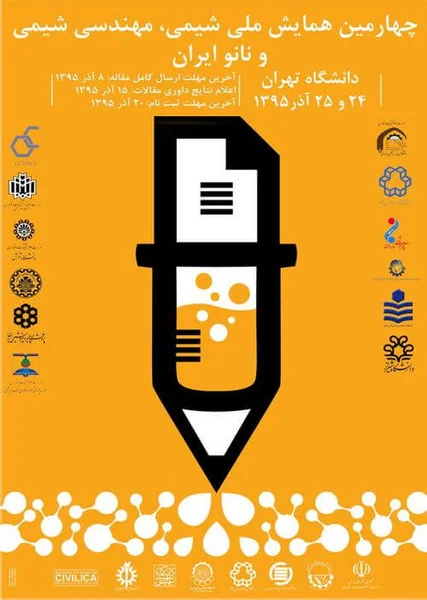-
electrophotocatalytic process for removing acid humic from aquouce
جزئیات بیشتر مقاله- تاریخ ارائه: 1395/09/20
- تاریخ انتشار در تی پی بین: 1395/09/20
- تعداد بازدید: 351
- تعداد پرسش و پاسخ ها: 0
- شماره تماس دبیرخانه رویداد: -
humic substances, as precursor to disinfection by-products (dbps), are produced by the microbial degradation of dead plant matter. the goal of this research is to investigate of humic acid (ha) from urban drinking water by batch electrophotocatalytic reactor (epc) with using zinc oxide (zno) nanoparticles immobilized on zinc (zn) sheet-copper electrode, and lamp emitting dynode (led) ultraviolet-a (uv-a) lamp. various operating variables are tested; these included current density, initial concentration of ha, lamp intensity, layering of zno nanoparticles, ph, and radiation time.to prepare the zno films on the zn electrode, dry methods are used. the sample is prepared by adding 5-15 milligrams of ha per ml of deionized water. the studied variables are ph (4-10), the ha concentration (5-15 mg/l), the lamp intensity (360-600 mw/cm2), radiation time (7.5-22.5 min), layering of zinc oxide nanoparticles (1-3), and current density (3-9 ma/cm2). the ha concentration is measured by using spectrophotometer at a wavelength of 253.7 nm. the optimal removal (0) is obtained at ph 4, radiation time of 15 minutes, 2- layer of zno nanoparticles, lamp density 600 mw/cm2, and current density of 9 ma/cm2. the ha decay follows a first order reaction. the results of ha removal efficiency by taguchi model indicates that the reaction time is the most important variable. the electrochemical (e) process is the least efficiency. the rate of decay decreases at higher concentrations. thus, batch experiments show that the epc reactor could be considered as a promising technology for treating ha-polluted water.
مقالات جدیدترین رویدادها
-
استفاده از تحلیل اهمیت-عملکرد در ارائه الگوی مدیریت خلاقیت سازمانی و ارائه راهکار جهت بهبود
-
بررسی تاثیر ارزش وجوه نقد مازاد بر ساختار سرمایه شرکت های پذیرفته شده در بورس اوراق بهادار تهران
-
بررسی تأثیر سطح افشای ریسک بر قرارداد بدهی شرکت های پذیرفته شده در بورس اوراق بهادار تهران
-
بررسی تأثیر رتبه بندی اعتباری مبتنی بر مدل امتیاز بازار نوظهور بر نقد شوندگی سهام با تأکید بر خصوصی سازی شرکت ها
-
تأثیر آمیخته بازاریابی پوشاک ایرانی بر تصویر ذهنی مشتری پوشاک ایرانی (هاکوپیان)
-
تجربه ی شهری متفاوت؛ مروری بر جنبش باغ های اجتماعی
-
تاثیر اندرکنش خاک و سازه بر صحت نتایج تحلیل استاتیکی غیرخطی در استاندارد asce 41
-
پیش بینی مراحل تغییر رفتار فعالیت جسمانی دانشجویان دانشگاه علوم پزشکی قزوین با استفاده از الگوی پندر
-
تحلیل دینامیکی تونل خط هفت متروی تهران در اثر بارهای ناشی از زلزله با استفاده از روش عددی
-
temperature-driven growth shape simulation and model of greenhouse melon leaves
مقالات جدیدترین ژورنال ها
-
مدیریت و بررسی افسردگی دانش آموزان دختر مقطع متوسطه دوم در دروان کرونا در شهرستان دزفول
-
مدیریت و بررسی خرد سیاسی در اندیشه ی فردوسی در ادب ایران
-
واکاوی و مدیریت توصیفی قلمدان(جاکلیدی)ضریح در موزه آستان قدس رضوی
-
بررسی تاثیر خلاقیت، دانش و انگیزه کارکنان بر پیشنهادات نوآورانه کارکنان ( مورد مطالعه: هتل های 3 و 4 ستاره استان کرمان)
-
بررسی تاثیر کیفیت سیستم های اطلاعاتی بر تصمیم گیری موفق در شرکتهای تولیدی استان اصفهان (مورد مطالعه: مدیران شرکتهای تولیدی استان اصفهان)
-
بررسی رابطه بین معیارهایی از راهبری شرکتی با مدیریت وجوه نقد در دسترس در بورس اوراق بهادار تهران
-
حجیّت خبر واحد ثقه در تفسیر قرآن کریم از دیدگاه آیت الله معرفت
-
بررسی طراحی کارآمد فضاهای اداری با بهره گیری از معماری سبز با تاکید بر روانشناسی محیط
-
مولفه های اجتماعی شدن کودکان از طریق انیمیشن های هالیوودی (دوبله فارسی) در قالب تحلیل انتقادی گفتمان
-
تأثیر مدیریت ارتباط با مشتریان الکترونیکی بر رضایت مشتریان ایرانسل




سوال خود را در مورد این مقاله مطرح نمایید :